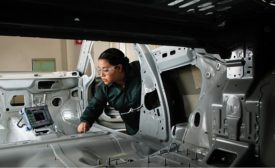Home » traceability
Articles Tagged with ''traceability''
Intelligent factories, electric vehicles and traceability are just some of the factors that are influencing change in automotive part inspection, say experts in the field.
Read More
Analyzing and Reporting Tensile Data on Force Measurement Systems
Using readily available tools such as graphs, tolerances, comments, and test criteria ensures that the required tensile information is on hand when needed.
June 1, 2019
Sponsored Content
Repeatability, Reproducibility and Traceability for Medical Compliance
April 10, 2019
Why Smart Cameras are the Ideal Solution for Traceability
Machine vision’s role in track, trace and control.
April 5, 2019
Robotics Emerge to Power Next-Generation Industrial Environments
A LOOK AT HOW ROBOTS ADDRESS PRODUCT QUALITY.
May 5, 2015
Phantom Setting Plugs
These plugs are drifting around inspection departments all over
September 5, 2014
Calibration Explained
Every day there are numerous applications proving how useful calibration is.
August 4, 2014
Stay in the know with Quality’s comprehensive coverage of
the manufacturing and metrology industries.
eNewsletter | Website | eMagazine
JOIN TODAY!Copyright ©2025. All Rights Reserved BNP Media.
Design, CMS, Hosting & Web Development :: ePublishing










